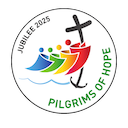In this section of the website, you will find information about the Intent, Implementation and Impact to teaching Geography at St Bede’s Catholic School. View our course information below:
Geology In Key Stage 2 students will have studied the basics of the water cycle and rivers. They will build on this in Year 7 as they look at how soil type and rock type is different and how this can have an impact on physical landscapes and landforms as well as human interactions (population distribution). Students will continue this in Year 8 and introduce the weathering of different rock types. In Year 9 students look at geological timescales and link this to plate tectonics. They also evaluate the impacts soil type can have on population and agricultural productivity, showing links across topics. They will use this knowledge to enhance their understanding of the GCSE topics of Physical Landscapes and Processes and Weather, Climate and Ecosystems. Students choosing to study Geography to A Level will then go on to look at how geology is responsible for a range of fluvial and coastal landforms and how they are created. Tectonics During Key Stage 2 students will have studied the basics of volcanos and earthquakes and be introduced to the concept of tectonic plates. In Year 7 students will briefly discuss how tectonic hazards can affect population distribution. They will discuss what tectonic hazards are. By Year 9 they will develop this and explain how they can also have an impact on food security. They will be able to explain the formation of earthquakes, volcanoes and tsunamis and link this to plate tectonics. They will be able to discuss the impacts this has around the world. They will develop this knowledge in the topic of tectonic landscapes and hazards at GCSE, where they will discuss the impacts of these hazards in links to a countries development. Students studying A Level will look in much more detail at the causes, features and hazards created by tectonic hazards. Living World At Key Stage 2 students will have studied biomes and vegetation belts and use this topic to study a region in South America. In Year 7 students will build on this and look at the characteristics of contrasting unique environments. They explain the importance of these environments and look at sustainability linked to these. They will look at nutrient, water and carbon cycles. Students will revisit this throughout all years by looking at the sustainability of the living world, developing their synoptic skills. In GCSE students will further develop this knowledge when looking at weather, climate and ecosystems, particularly focusing on the sustainable use of these resources and present challenges. Students will develop this theme at A Level by studying the carbon cycle of the rainforest. Weather, climate & change At Key Stage 2 students will have looked at climatic zones and gain a basic understanding of weather. In Year 7 students study the weather of contrasting ecosystems and think about the impact this has on them (farming, population, habitats). They are introduced to the idea that storm events are increasing as a result of climate change. In Year 8 students develop the links to climate change by looking at global responsibility and the causes, impacts and management of climate change. They will then use this to explain why extreme weather is becoming more common in the UK and how the impacts of climate change can have an impact on global conflict. In Year 9 students will be able to link issues of climate change to population and the environment, natural hazards and population trends. They will know the global impacts that climate change is having. Students will develop this at GCSE through the topic weather. Climate and ecosystems where they will look at natural and human causes of climate change, global atmospheric weather circulation, and factors that affect the UKs weather. At A Level students will use this knowledge to discuss atmospheric hazards and link climate change to the water and carbon cycle. Physical landscapes In Key Stage 2 students will have looked at basic landforms created by rivers and look at mountains, focusing on the UK as place knowledge. In Year 7 students will look at landforms created by coastal erosion and be able to link these to distinctive landscapes in the UK. Moving into Year 8 students will use this knowledge of erosion to explain how fluvial landforms are created, linking to distinctive landscapes. In Year 9 students will look at the formation of tectonic hazards and the management of these landscapes. Tectonic hazards are left until Year 9 as they are more complex to understand. Students will further develop their knowledge of this in GCSE by studying the topic of physical landscapes and processes and tectonic hazards. They will also look at the formation of landforms in more depth when studying the water cycle, hazards and coastal landscapes. Population, urban growth and change In Key Stage 2 students will have studied types of settlement and land use and where people live. In Year 7 students develop this and begin by looking at the population of the UK and the reasons for the birth rate and death rate in the UK and compare this to other locations. In Year 8 students develop this knowledge on population by looking at how places change over time and the impact this can have on the demographic structure. By module 3 they will link this to migration linked to conflict and evaluate the impacts this can have on populations of both countries of origins and host countries. By Year 9 pupils bring together a range of human and physical topics to look at population and the environment. They develop the work they did in Year 7 by introducing population theorists and look at different contemporary issues that can have an impact on population. Students look at population at a global scale and global trends. Students build on this in GCSE by studying social development and rural to urban links, looking specifically at the movements within the UK. By A Level students apply this knowledge to the population and the environment module and changing places. International Development In Key Stage 2 students will have looked at England and Europe and also South America, they will be able to compare levels of development at a superficial scale. In KS3 students are introduced to the topic of international development in Year 7 when looking at migration and refugees and asylum seekers. They begin to understand the role of international aid. This is developed in Year 8 and student’s link economic progress to social development in countries. They are introduced to different global institutions, e.g. The UN and their role in conflict resolution. In Year 9 students develop their synoptic skills as they will be able to comment on how international development is effected by physical and human factors. They will look at factors effecting social development, evaluate the impact natural disasters can have on a country and evaluate how rapid urbanisation can have an impact. Students will be able to make links across topics about international development. This is developed throughout all topics at GCSE when students regularly look at different types of aid and how countries at different levels of development are affected by different geographical factors. Students will study international development in detail as a topic. At A Level students will look at unequal patterns of development when studying global governance. Economic Activity In Key Stage 2 students will have studied the distribution of natural resources including energy, food, minerals and water and look at how people make money from these. In Year 7 students are introduced to the term economic and will be able to explain how different human interactions can have an impact on economic activity. They will think about the impact migration, coastal management and activity in natural environments can have on the economy of a country. Students will start with the UK. In Year 8 students will look at economic activity in depth in the global governance module and understand the global shift and associated impacts. They will gain an insight into international trade. Within the modules of conflict and rivers students will begin to develop their synoptic skills and be able to analyse effects to the economy. By Year 9 students will be competent at discussing the economic impacts of a geographical concept and link this in to agricultural systems, global health and urbanisation. Students will develop this at GCSE by studying the topic of Economic Trade and Development where they will look at patterns of global trade. At A Level the module of global governance allows students to look in depth at global trade and relations, geopolitical events and contemporary global issues. Natural Resources In Key Stage 2 students will have studied the distribution of natural resources including energy, food, minerals and water. In Year 7 students are introduced to the idea that natural landscapes can be rich in natural resources and discuss the arguments for and against extracting these resources. They will look at how this can have an impact on population distribution. In Year 8 students will develop this further and look at renewable and non-renewable energy and they will look at the issue of the uneven distribution of resources and link this to causes of global conflict. By Year 9 students will be able to explain how the natural resources can impact on agricultural systems and be used as reasons to explain migration patterns. Students will look at this in more detail when studying weather, climate and ecosystems and will assess the sustainability of exploiting natural resources. Students will develop this at A level when studying the water and carbon cycle. At St Bede’s our intention is for our students to:Progression Maps



